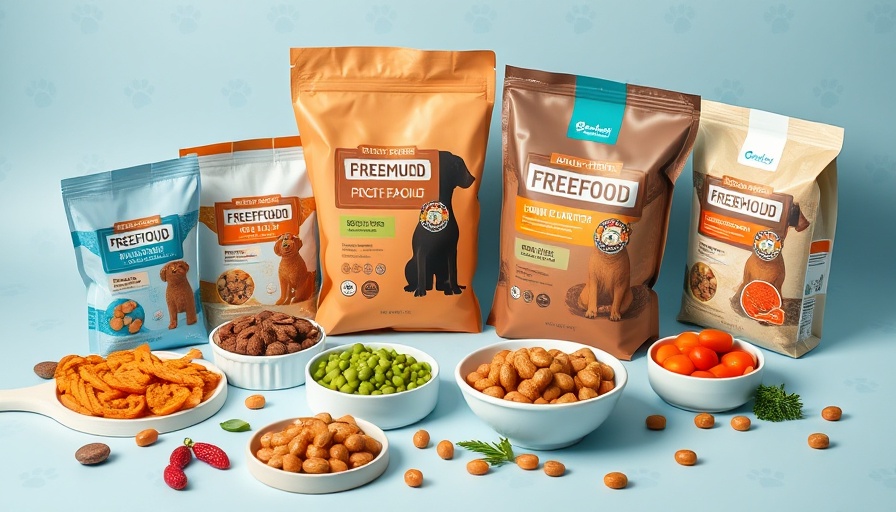
The Heart and Happiness Connection for Dogs
This February, while love fills the air, let’s focus on the one who brings unconditional love to our lives—our dogs. From their tail wags to gentle nudges, our furry companions have an emotional language of their own, and it's often reflected in their physical health. Did you know that the food they consume directly influences not only their heart health but also their emotional balance?
Nourishing your dog with a balanced diet can prevent heart disease, reduce anxiety, and enhance mood, creating happier, healthier pets. With Valentine’s Day approaching, why not show your dog love through the nutrition you provide?
Why Nutrition Matters for Your Dog's Heart Health
The core of a dog's well-being is a balanced diet that fuels both their body and soul. Essential nutrients in their food support their physical health—strengthening muscles, maintaining heart function, and ensuring overall vitality—while also playing a crucial role in emotional stability.
For example, adequate protein contributes to muscle repair, while healthy fats ensure sustained energy levels. Carbohydrates are vital for digestion and can even influence mood-regulating hormones like serotonin. A nutrient-short diet can lead to lethargy, irritability, and erratic behavior, underscoring the importance of quality nutrition.
Foods That Foster a Happy, Healthy Heart
When it comes to maintaining a strong heart, high-quality protein is essential. Ingredients like turkey, pork, and beef—especially those sourced from organic and grass-fed farms—provide the amino acids necessary for muscle repair, including the heart muscle.
Moreover, protein's role extends to emotional well-being as it regulates neurotransmitters that manage mood. Dogs that receive a balanced diet rich in protein are often more energetic and better able to handle stress.
Adding Essential Nutrients for a Balanced Diet
Incorporating key nutrients like taurine and L-carnitine into your dog’s diet can significantly bolster cardiovascular health. Taurine is vital in muscle function, helping prevent severe conditions like dilated cardiomyopathy (DCM), a common heart disease in dogs.
L-carnitine aids in energy production, ensuring that dogs remain active and lively. These amino acids are often found in diets that emphasize quality meat sources, contributing to both physical and mental balance.
Powerful Antioxidants: Protecting Hearts and Minds
Antioxidants are crucial in fighting off oxidative damage. Ingredients such as blueberries, spinach, and carrots are rich in these properties, not only aiding in overall heart health but also helping to maintain emotional stability.
Blueberries, for instance, are packed with anthocyanins, which boost brain functions and stabilize moods. Leafy greens and carrots contribute vital nutrients that enhance heart and cognitive health, proving that healthy eating contributes to a happier dog.
Omega-3 Strategy: A Healthy Heart and a Happier Mind
Omega-3 fatty acids are essential for cardiovascular health in dogs and can help manage stress levels. Found in fish and certain plant sources, these healthy fats improve circulation and promote a calm demeanor in dogs.
Sourcing high-quality Omega-3s, such as those in salmon or krill oil, can significantly benefit your dog's health. Adequate Omega-3 intake has been linked to improved mood stability, reducing anxiety-related behavior and enhancing overall well-being.
Managing Weight for Optimal Heart Health
Finally, maintaining a healthy weight is crucial for your dog's heart health and emotional happiness. Excess weight strains the heart and can lead to various health issues, including high blood pressure.
Weight management also plays a vital role in how active and engaged your dog feels. Keeping your pup at an optimal weight helps them remain playful and energetic, contributing to their emotional satisfaction.
Your Dog Deserves Nutritional Love
Understanding the deep connection between your dog's diet and their heart and emotional health is essential. By prioritizing high-quality ingredients and balanced nutrition, you can enhance their quality of life.
Show your furry friends the love they deserve this Valentine's Day by giving them a meal they will wag their tails at! Consult with a canine nutrition expert from Volhard Dog Nutrition for personalized advice on selecting the best diet for your dog.
 Add Row
Add Row  Add
Add 




Write A Comment